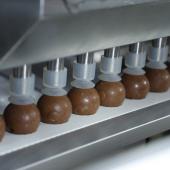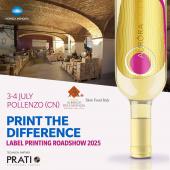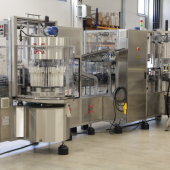… And the bubble film does not burst
THE PERFECT SYNC new plant bubble wrap multilayer co-extrusion created by Torninova in cooperation with Elektron uses an Omron architecture run via PC on Ethernet. Result: up to 170 sqm of film/min rewound on coils without glue.
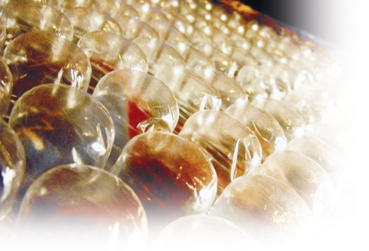 Bubble wrap is one of the most-used materials for protective packaging. Perhaps not everyone knows, though, that behind the best plants for the production of so-called "air bubble film" is an Italian company, Torninova of Bastia Umbra, a company that has achieved worldwide leadership through the strong technological basis of its solutions.
Bubble wrap is one of the most-used materials for protective packaging. Perhaps not everyone knows, though, that behind the best plants for the production of so-called "air bubble film" is an Italian company, Torninova of Bastia Umbra, a company that has achieved worldwide leadership through the strong technological basis of its solutions.
One of the most recent achievements of the company based in the province of Perugia - a multi-layer co-extrusion system - probably represents the highest point ever reached by a manufacturer in this field. A solution that encompasses the complexity of typical solutions for the plastics market, but with the logic (and speed) of the world of papermills. Decisive, both in terms of technological support and the level consultancy, the contributions of two exceptional partners: Elektron, responsible for the development of electrical and automation side, and Omron, main provider for the electro-mechanical components.
170 square metres of film per minute
The new plant for the multi-layer co-extrusion of air bubble film performs the simultaneous overlapping of two layers of welded plastic material (a base layer and one for the bubbles) to form a shock resistant sandwich. «With this solution - explains Marco Bastianini, business manager for abroad for Torninova Srl - we can get a film that is light but with resistance characteristics closer to those of materials with greater basis weights made on traditional coextrusion systems».
The plant operates up to a speed of about 80 m/min, for a total of about 170 sqm of film per minute (for coils of 2.40 m in width).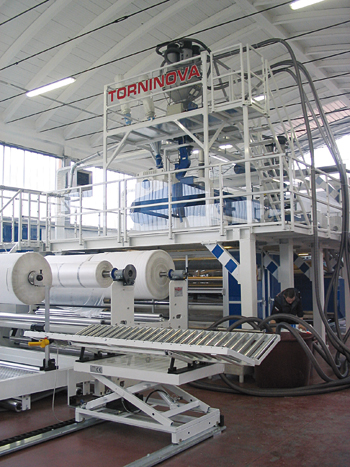
The cycle time, between when the product enters the machine in the form of granules and comes out transformed into films, is about 25 seconds. In-between, the whole series of intermediate steps: extrusion, the suction of the bubbles on the metal forming cylinder, the overlapping and welding of the two heated layers close to the socalled “flat head”, the cooling of the extruded film (from a temperature of around 250 °C down to 45-50 °C, by way of a series of cooled cylinders), rewinding and cutting.
Perfect synchronisms, even in the rewinding
On the level of automation, the main difficulty of a plant of this type resides in the management of the synchronisms, which becomes a central aspect, in particular during rewinding. Stefano Allegrucci, technical manager of Elektron explains: «Torninova needed to manage large-format coils at relatively fast cycle speeds. Specifically, the demand was to enable the making of coils up to 42 m in length at the minimum guaranteed speed of 60 m/min; in practice this is equivalent to producing a coil every 42 seconds. What raised the level of complexity of the application was the special hooking up system on the core of the roll, obtained without the use of adhesives. On each cut, in practice, the film tail is attached "on the fly" to the subsequent core, taking advantage of the perfect synchronization of the winding changeover from one coil to another».
This led technicians from Elektron to drastically change course compared to the traditional choices made during handling. Indeed they opted for a planetary gear reducer with brushless motors, a combination that guarantees a better result in terms of performance, control and energy savings, compared both to solutions based on asynchronous motor and inverter, and more recent solutions that use feedback encoders and closed loop inverters (on the control part). Specifically Omron Sigma II brushless motors and compact Junma servodrives were used, along with F7 inverters with feedback and V1000 in DeviceNet (without feedback). The brain of the system is a PLC Omron CJ1M, that runs an architecture based on three fieldbuses: Mechatrolink for the motion part, DeviceNet for the inverters and heat regulation (by EJ1) and CompoNet for I/O (sensors, solenoid valves). The whole was then interfaced on an Ethernet network to be managed via PC touch Omron NSA to ensure accessibility with any tools from anywhere in the world.
The use of a powerful control card like the NCF71 for point-to-point applications allows the management of the movements in the delicate phase of the hooking up to the roll core from one coil to the other, reducing the programming, as well as development and maintenance costs. The combination with the Mechtrolink network (the card supports the PLC function blocks) has proved particularly effective, both in terms of speed, and parameterization). «What is impressive is its simplicity: only three parameters are needed to set in motion an axis. For our technological level it is very well structured with a card of that size mounted on a PLC, in fact offering a tool and a setup in a very short time (9 axes) that enables the handling of 16 axes».
Open to all
Overall, the system fully meets the requirements of openness required by the customer. The software that runs on the control PC, a proprietory supervisor developed by Elektron on Omron protocol, among other things enables the self tuning of the machine: in this way the operator can automatically capture the sensitive parameters (and save them in a database), so that they can be recalled at any time. This choice, combined with the use of open protocols (see DeviceNet) for integrating multi-vendor components, ensures greater visibility onto the process: with this level of automation even the less significant I/Os can be replicated, merely devolving to the operator the task of running things with limitations. «We have built an architecture that is in fact detached from the operator - Allegrucci continues – making both the PC and the PLC as well as the memory itself expandable. There is no limitation to the software, the variety of formats are dictated by the mechanics of the machine, and we know ahead of time what formats can or cannot be tackled».
From the pinnacle of its experience in the industry, Torninova can define this multilayer co-extrusion plant as one of the world's most advanced solutions for the production of air bubble film. This result achieved also thanks to the advice given by Omron in the development and design stage, as Marco Bastianini of Torninova highlights: «If Omron has had this success in Italy it is because it provides its customers with an organization capable of responding to specific demands in an extensive manner». Shadowing the electrician with ones own technical staff, means offering a real support to the activities of the customer. Not to mention the contribution made in the design of some critical applications: the cutting of the film on the fly for the glueless rewinding on the coil is perhaps the most concrete example».














